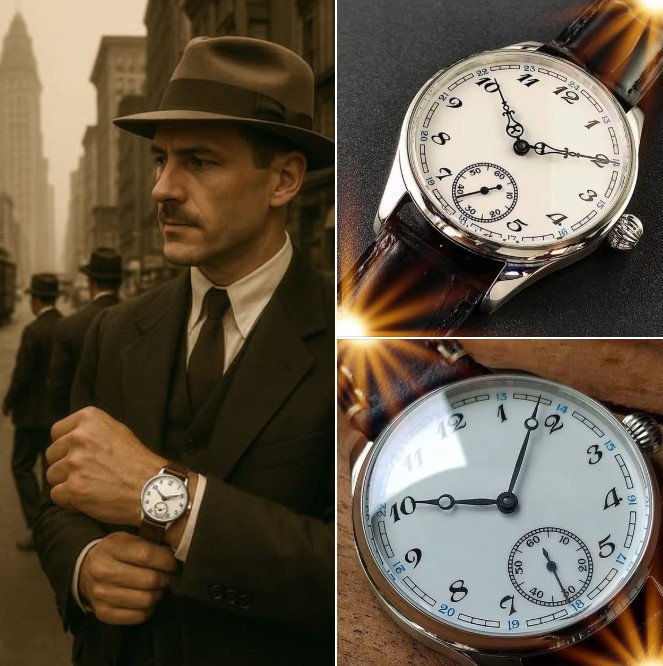The Evolution of Timekeeping
- Joseph Gadol
- Jul 15
- 4 min read
Updated: Jul 16
From my personal experience and knowledge, I can say that The Evolution of Timekeeping is a truly fascinating journey—one that blends innovation, artistry, and the relentless pursuit of precision. Over the years, I’ve been captivated by how we progressed from the intricate mechanics of pocket watches to the cutting-edge functionality of smart hybrids. It's not just about keeping time—it's about reflecting culture, craftsmanship, and personal identity. In this post, I’d like to take you through The Evolution of Timekeeping, highlighting key moments, influential innovations, and sharing my own insights on where this ever-evolving story is headed.
The Evolution of timekeeping - The Birth of Timekeeping: Early Devices
Before wristwatches, people relied on sundials and water clocks to keep track of time. For example, the ancient Egyptians used shadow clocks around 1500 BC, while water clocks were developed in China by 400 BC. These early technologies set the stage for the advancement of precise timekeeping.
The Mechanical Clock
By the Middle Ages, the mechanical clock transformed how people viewed time. Initially found in public squares, they struck the hours to signal the community. The introduction of escapement mechanisms in the 14th century was significant; this innovation enabled clocks to maintain accurate time. It eventually led to the creation of smaller, portable timepieces that we recognize today.
The Pocket Watch Era: A Status Symbol - in my opinion they are amazing!
The 16th Century
The 16th century saw the emergence of pocket watches, a notable milestone in horology. These elaborate devices were not merely tools; they represented status and sophistication. Wealthy individuals frequently showcased their pocket watches, displaying their taste and social standing during gatherings.
Innovations and Complications
As demand for pocket watches rose, so did their complexity. Watchmakers introduced intricate complications, such as perpetual calendars that accounted for leap years and minute repeaters that chimed the hour on demand. For instance, some pocket watches could even display the phases of the moon, which added to their appeal as luxury items.
The Wristwatch Revolution: A Shift in Fashion
The Transition from Pocket to Wrist
The early 20th century marked a pivotal shift as wristwatches gained popularity. Initially designed for military use, they proved invaluable during World War I, allowing soldiers to coordinate attacks without fumbling in their pockets. After the war, celebrities embraced wristwatches, transforming them into fashion statements and popularizing their use among civilians.
The Golden Age of Watchmaking: Art and Precision
The 1920s and 1930s
The 1920s and 1930s are viewed as the Golden Age of watchmaking. Iconic brands like Rolex, Patek Philippe, and Omega became synonymous with quality and innovation. For instance, Rolex introduced the Oyster in 1926, the first waterproof wristwatch, which changed consumer expectations forever.

The Impact of World War II
World War II pushed wristwatch technology to new heights. Diver and pilot watches, built for specific needs, combined durability with practicality. The famous Rolex Submariner and the Breitling Navitimer emerged from this period, showcasing features like rotating bezels for divers and reliable chronographs for pilots.
The Quartz Crisis: A Technological Disruption
The Arrival of Quartz Watches
In the late 1960s, the watch industry faced upheaval with the advent of quartz technology. Japanese brands like Seiko began producing quartz watches that were not only accurate but also much cheaper to make. For example, quartz movements could stay accurate to within seconds each month, while traditional mechanical watches often varied by minutes. This shift led to the Quartz Crisis, threatening traditional Swiss manufacturers.
The Renaissance of Mechanical Watches
Resurgence in the 1980s
Despite the rise of quartz, the late 1980s brought a revival for mechanical watches. Collectors began to appreciate the artistry of traditional timepieces, leading brands to refocus on craftsmanship. Sales of luxury mechanical watches increased by approximately 30% during this period, showing the growing demand for traditional devices.
The Rise of Smart Watches: A New Frontier
The Emergence of Smart Technology
By the 21st century, the watch industry faced yet another disruption with the rise of smart technology. Smartwatches gained popularity due to their ability to monitor health, track fitness, and interface with other devices. For instance, Apple sold over 30 million Apple Watches in 2020 alone, revealing a substantial shift in consumer interests.
The Hybrid Watches: Blending Tradition and Innovation
The Best of Both Worlds
With the growing trend of smartwatches, many watchmakers began creating hybrids that blend traditional watch designs with modern functionalities. These models hold the charm of classic craftsmanship while integrating smart features like fitness monitoring. Brands such as TAG Heuer and Garmin have successfully introduced hybrid watches that appeal to both traditionalists and tech enthusiasts.
The Future of Luxury Watches: Trends on the Horizon
Sustainable Practices
Recently, sustainability has gained prominence in the luxury watch market. Consumers increasingly prefer eco-friendly brands that use recycled materials and ethical gems. Some companies, like Swatch and Panerai, have embraced sustainability by launching collections designed with eco-conscious practices.
Customization and Personalization
Another emerging trend is personalization. Consumers desire unique pieces that tell their stories. Brands are responding by offering customization options, allowing customers to select colors, materials, and even engravings. This move fosters a deeper connection between the wearer and their timepiece.
The Ongoing Journey of Timekeeping
The evolution of luxury watches from pocket watches to smart hybrids highlights a rich history of innovation and social significance. As technology continues to advance and consumer preferences change, the watch industry stands at a fascinating crossroads. Traditional craftsmanship still captivates, while modern technology opens new doors.
Whether you are drawn to timeless designs or enthusiastic about cutting-edge features, the world of luxury watches has something for everyone. The future of timekeeping promises to blend the best aspects of both realms, promising innovation that pays homage to its storied past while embarking on exciting new paths.








Very thoughtful. Thank you